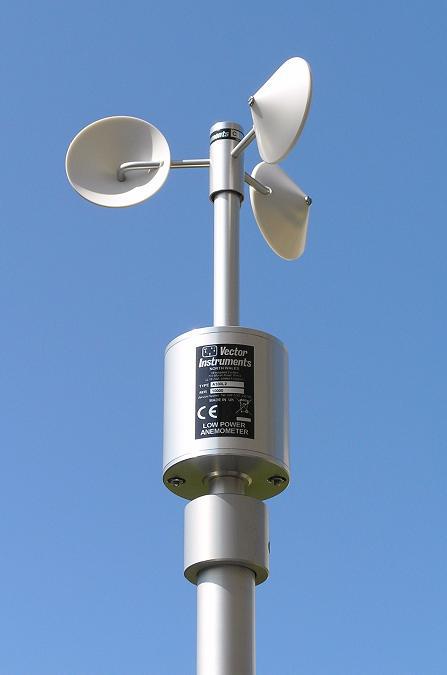Contrasting Digital and Mechanical Anemometers: Which is Right for You?
Contrasting Digital and Mechanical Anemometers: Which is Right for You?
Blog Article
Discovering the Functions and Benefits of Anemometers for Weather Lovers and Professionals
From mug anemometers to sonic anemometers, each type brings its distinct set of benefits and applications, losing light on various elements of climatic conditions. As we dive into the functions and benefits of anemometers, a much deeper understanding arises not just of dominating weather sensations yet also of the wider ramifications for industries like wind energy production and ecological research study.
Relevance of Anemometers in Climate Surveillance
Anemometers play a vital role in climate surveillance by providing precise dimensions of wind speed, assisting in forecasting and understanding weather patterns. These tools, varying from standard cup anemometers to modern ultrasonic anemometers, are necessary for meteorologists, researchers, and weather condition enthusiasts alike. By measuring wind speed, anemometers assist in determining the intensity of climate sensations such as storms, cyclones, and hurricanes. Furthermore, they provide important data for aeronautics, maritime operations, and different sectors that are delicate to wind conditions.

Kinds of Anemometers and Their Applications
With the critical role anemometers play in weather condition surveillance and projecting, comprehending the different kinds of these instruments and their applications becomes necessary for professionals and lovers in the field. One of the most common kinds of anemometers include cup anemometers, vane anemometers, hot-wire anemometers, and ultrasonic anemometers. Cup anemometers contain three or four cups placed on straight arms that rotate with the wind, measuring its speed. Vane anemometers, on the various other hand, make use of a freely rotating vane to straighten with the wind direction, giving both wind speed and direction dimensions. Hot-wire anemometers run based on the concept of convective warm transfer, where the cooling result of the air flow is measured to identify wind rate. Ultrasonic anemometers make use of ultrasonic sound waves to calculate wind speed and direction properly.
Mug anemometers are suitable and robust for general weather condition monitoring, while vane anemometers are preferred for directional dimensions. Ultrasonic anemometers are non-intrusive and use high precision, often used in study and specialized weather condition monitoring applications.
Benefits of Using Anemometers in Forecasting
In meteorology, the usage of anemometers offers invaluable benefits for boosting the accuracy of climate forecasting. Anemometers measure wind rate and direction, supplying critical information for predicting weather condition patterns. By integrating wind information right into projecting designs, find meteorologists can better comprehend the movement of climate systems, anticipate changes in atmospheric problems, and problem a lot more accurate projections.
Additionally, anemometers play a crucial duty in examining possible climate dangers. Checking wind rates aids forecasters anticipate serious weather condition occasions such as storms, tornadoes, and winter tornados with higher precision. This early caution system enables authorities to release prompt signals and carry out needed precaution, minimizing the risks to life and property.
Furthermore, anemometers help in enhancing eco-friendly energy production. By assessing wind patterns, meteorologists can determine ideal places for wind farms and anticipate check this site out power result, adding to the effective generation of wind power.

Anemometers in Wind Energy Production
Given the critical duty anemometers play in giving exact wind information for weather forecasting and danger evaluation, their importance reaches the realm of wind energy production. Anemometers are vital tools in the field of wind power, where the measurement of wind rate and instructions is critical for establishing the expediency and performance of wind generator setups. By precisely measuring wind rates at varying heights, anemometers aid optimize the placement and style of wind turbines to make best use of power outcome.
In wind farms, anemometers are strategically placed to collect real-time wind data that is utilized to assess the prospective power production of a site. This data is crucial in figuring out the economic viability of wind power jobs and in forecasting power generation to make sure grid stability. Additionally, anemometers aid in keeping an eye on wind conditions to enhance generator performance, prevent damages from high winds, and ensure the safety of employees working in the location of wind turbines.
Enhancing Climate Recognizing With Anemometers

Anemometers play a vital function in boosting our understanding of microclimates. These localized weather can differ considerably from broader local forecasts, making it important to have precise data for details areas. anemometer. By strategically placing anemometers in numerous areas, researchers can gather detailed details on exactly how wind acts in different terrains, city settings, or bodies of water
Furthermore, anemometers contribute to boosting weather projecting designs by providing real-time information on wind actions. This details is especially valuable for forecasting extreme climate events, optimizing farming practices, and sustaining industries like aviation and maritime navigating. Generally, anemometers are important instruments that allow us to dive much deeper right into the complexities of weather condition systems, inevitably leading to more better-informed choices and exact predictions.
Conclusion
In conclusion, anemometers play an essential role in climate surveillance and forecasting by determining wind rate and direction. Anemometers also have applications in wind power production, additional highlighting their significance in both weather forecasting and sustainable energy fields.
From cup anemometers to sonic anemometers, each kind brings its unique set of applications and benefits, losing light on various facets of climatic conditions. These tools, varying from typical mug anemometers to contemporary ultrasonic anemometers, are crucial for meteorologists, researchers, and climate fanatics alike. The most common types of anemometers include cup anemometers, vane anemometers, hot-wire anemometers, and ultrasonic anemometers. Cup anemometers are robust and ideal for general weather condition surveillance, while vane anemometers are preferred for directional dimensions. Anemometers are necessary instruments in the area of wind power, where the measurement of wind rate and instructions is critical for identifying the usefulness and performance of wind turbine installations.
Report this page